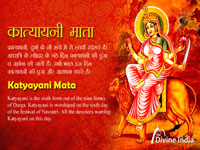

The Brahmaputra River is one of the major rivers of Asia, flowing through three countries - southwestern China, northeastern India, and Bangladesh. It is known as Brahmaputra or Luit in Assamese, Yarlung Tsangpo in Tibetan, Siang/Dihang River in Arunachali, and Jamuna River in Bengali. It is the 9th largest river in the world by discharge and the 15th longest.
The Brahmaputra River originates in the Manasarovar Lake region near Mount Kailash in Burang County, Tibet, where it is known as the Yarlung Tsangpo. It flows along southern Tibet, crosses the Himalayas and enters Arunachal Pradesh. In Arunachal Pradesh, it is known as the Brahmaputra after entering India. Flowing southwest through the Assam Valley, it flows into Bangladesh as the Jamuna. In Bangladesh, it joins with the Ganges to become the Meghna and eventually falls into the Bay of Bengal.
The Brahmaputra River, about 3,000 km (1,900 mi) long, is important for irrigation and transportation in the region. Its average depth is 30 m (100 ft) and its maximum depth is 135 m (440 ft). The river can cause devastating floods during the spring season when the Himalayan snow melts. The average discharge of the Brahmaputra is about 22,000 m³/s, and during flood times it reaches 103,000 m³/s. The river is susceptible to channel migration and ablation, and is one of the few rivers in the world that exhibit a tidal bore.
The Brahmaputra River flows from the south-central part of Tibet to the Indo-Nepal border eastward, the plains of Assam and northern Bangladesh. The southern part of Tibet, in particular, receives high rainfall, keeping the region green. Kanchenjunga (8,586 m) is the highest point within the basin.
The upper part of the Brahmaputra was unknown for a long time, and its identification with the Yarlung Tsangpo was made in 1884–86. This river is often called Tsangpo-Brahmaputra. The Brahmaputra River differs from other rivers of the Indian subcontinent because its name is masculine. Brahmaputra means "son of Brahma" in Sanskrit.
The literal meaning of Brahmaputra is 'son of Brahma' and its mythological origin is described in the Kalika Purana. According to this text, Brahma blessed a sage named Shantanu and his wife Amogha with a son because of their piety. This child took the form of a river in which the gods and apsaras bathed.
After entering Arunachal Pradesh, the Brahmaputra River is known as Dihang. It is recognized by its vastness and power as soon as it enters the state of Assam. In the plains of Assam, this river is extremely powerful even in the dry season and its banks are badly affected by floods during the rains.
In Assam, the Brahmaputra River meets several major Himalayan streams. Near Guwahati, this river cuts through the rocks of the Shillong Plateau and the place is also famous for the Battle of Saraighat. The first combined railroad/road bridge over the Brahmaputra was built at Saraighat, which was opened to traffic in 1962.
The environment of the Brahmaputra floodplains in Assam is described as the Brahmaputra Valley Semi-Evergreen Forest Ecoregion. The region is famous for its natural beauty and biodiversity.
Thus, the Brahmaputra River is one of the major rivers of Asia due to its historical, cultural, religious and economic importance. Its uninterrupted flow and huge watershed is the lifeline of the region, proving to be a boon for Assam and surrounding areas.
There are many interesting facts about the Brahmaputra River that make it a unique and important river. Here are some interesting facts:
These facts demonstrate the characteristics of the Brahmaputra River and its historical, cultural, and geographical significance.